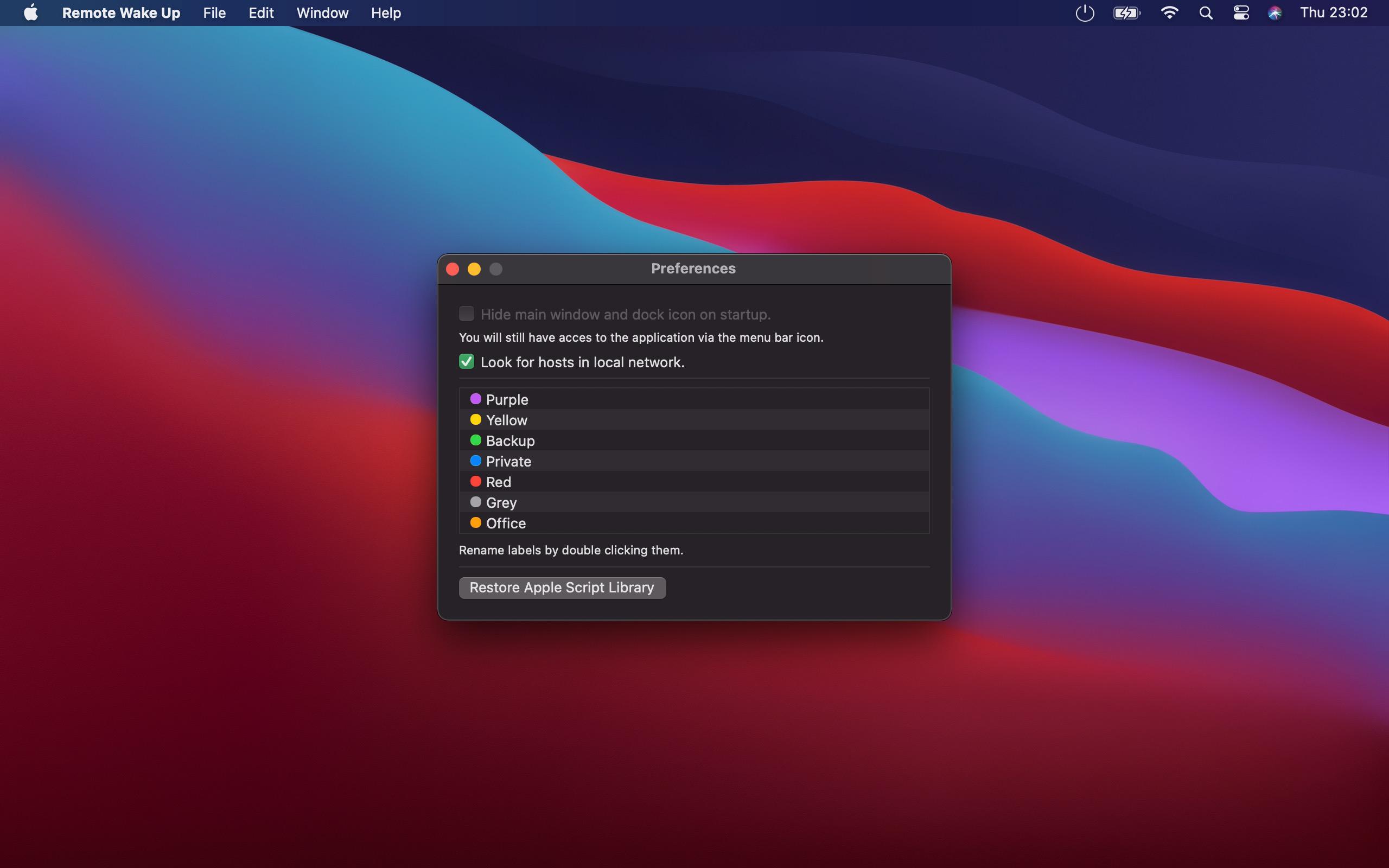Other uncompressed files: includes all the uncompressed audio formats that Audacity can export, including 4-bit (A)DPCM, 8-bit U-Law/A-Law, 24-bit, 32-bit and 64-bit options. Also GSM 6.10 WAV (mobile) which produces a mono WAV file encoded with the compressed, lossy GSM 6.10 codec as used in mobile telephones. Import sound files, edit them, and combine them with other files or new recordings. Export your recordings in many different file formats, including multiple files at once. Import and Export WAV, AIFF, MP3, AU, FLAC and Ogg Vorbis files. Fast “On-Demand” import of WAV or AIFF files (letting you. Format audacity.
remote wake-up
- Remote Wake Up Software
- Remote Wake Up Windows 7
- Remotely Wake Pc
- Remote Wake Up Pc
- Remote Wake Up
- Powershell Wake Up Remote Computer
Remote Wake Up Software
The ability for the power in a client machine to be turned on by the network. Remote wake-up enables software upgrading and other management tasks to be performed on users' machines after the work day is over. It also enables remote users to gain access to machines that have been turned off. Intel calls remote wake-up 'Wake-on-LAN.'Want to thank TFD for its existence? Tell a friend about us, add a link to this page, or visit the webmaster's page for free fun content.
Remote Wake Up Windows 7

Wake your computer from a remote location using this application. Simply type the required information (IP, Port, MAC Address), and you're done! You can store information about your most used computers for faster use. Note: This application use the WakeOnWan / WakeOnLan protocol (WOW / WOL). Jan 29, 2020 What is remote wake-up? The ability to remotely wake computers is an important development in computer management. The feature has evolved from a simple remote power-on to a complex system able to interact with many devices and operating system (OS) power states. Early implementations required the system to have a standby power supply. Remote wake-up computer program developed by Python and pyqt5. You can edit the info file to import the host information to wake up. It needs the domain name / IP address, MAC address and port. The format is as follows: Domain/IP MAC PORT. For example: 123.123.123.123:XX:XX:XX:XX:XX:XX 9 test.test.com XX:XX:XX:XX:XX. The computer that I'm trying to start remotely is a Dell Inspiron that I bought in 2008 and upgraded to windows 7 professional 64 bit. Yes, my Netgear WNDR3700 is a Gigabit router and it does maintain contact with the remote computer even when the computer is off. Depicus Wake on Lan. Depicus Wake on Lan is a small and portable tool that is able to boot up a computer using Wake-on-LAN over the internet or over the local network. Simply select Internet or Local subnet from the dropdown and enter the MAC address, IP address or host name, subnet mask (usually 255.255.255.255), and the port.
Link to this page:
-->
This topic describes best practices about implementing the remote wakeup capability in a client driver.

USB devices that can respond to external wake signals while suspended are said to have a remote wakeup capability. Examples of devices that have a remote wakeup capability are mice, keyboards, USB hubs, modems (wake on ring), NICs, wake on cable insertion. All of these devices are capable of producing remote wake signaling. Devices that are not capable of generating remote wake signaling include video cameras, mass storage devices, audio devices, and printers.
Remotely Wake Pc


Drivers for devices that support remote wakeup signaling must issue an IRP_MN_WAIT_WAKE IRP, also known as a wait wake IRP, to arm the device for remote wakeup. The wait wake mechanism is described in the section Supporting Devices That Have Wake-Up Capabilities.
When Does the System Enable Remote Wakeup on a USB Leaf Device?
Remote Wake Up Pc
In USB terminology, a USB device is enabled for remote wakeup when its DEVICE_REMOTE_WAKEUP feature is set. The USB specification specifies that host software must set the remote wakeup feature on a device 'only just prior' to putting the device to sleep.
For this reason, the USB stack does not set the DEVICE_REMOTE_WAKEUP feature on a device after receiving a wait wake IRP for the device. Instead, it waits until it receives a IRP_MN_SET_POWER request to change the WDM device state of the device to D1/D2. Under most circumstances, when the USB stack receives this request, it both sets the remote wakeup feature on the device and puts the device to sleep by suspending the device's upstream port. When you design and debug your driver, you should keep in mind that there is a loose relationship between arming a USB device for wakeup in software, by means of a wait wake IRP, and arming the device for wakeup in hardware by setting the remote wakeup feature.
The USB stack does not enable the device for remote wakeup when it receives a request to change the device to a sleep state of D3, because according to the WDM power model, devices in D3 cannot wake the system.
Why Does Attaching or Detaching My Device Produce a Different Wakeup Behavior in Windows XP and Windows Vista and later versions of Windows?
Remote Wake Up
Another unique aspect of the USB implementation of the WDM power mode regards the arming of USB hubs for remote wakeup. In Microsoft Windows XP all hub devices between host controller and the USB device are armed for wakeup whenever the USB device is armed for wakeup. This produces the surprising consequence that when sleeping devices are detached they will wake up the system.
In Windows Vista and later versions of Windows, if a USB leaf device on the bus is armed for wake, the USB stack will also arm the USB host controller for wake, but it will not necessarily arm any of the USB hubs upstream of the device. The USB hub driver arms a hub for remote wakeup only if the USB stack is configured to wake up the system on attach and detach (plug/unplug) events.
Note UHCI (Universal Host Controller Interface) USB host controllers do not distinguish between remote wake signaling and connect change events on root hub ports. This means the system will always wake from a low system power state if a USB device is connected to or disconnected from a root hub port, if there is at least one device behind the UHCI controller that is armed for wake.
Powershell Wake Up Remote Computer
Related topics
